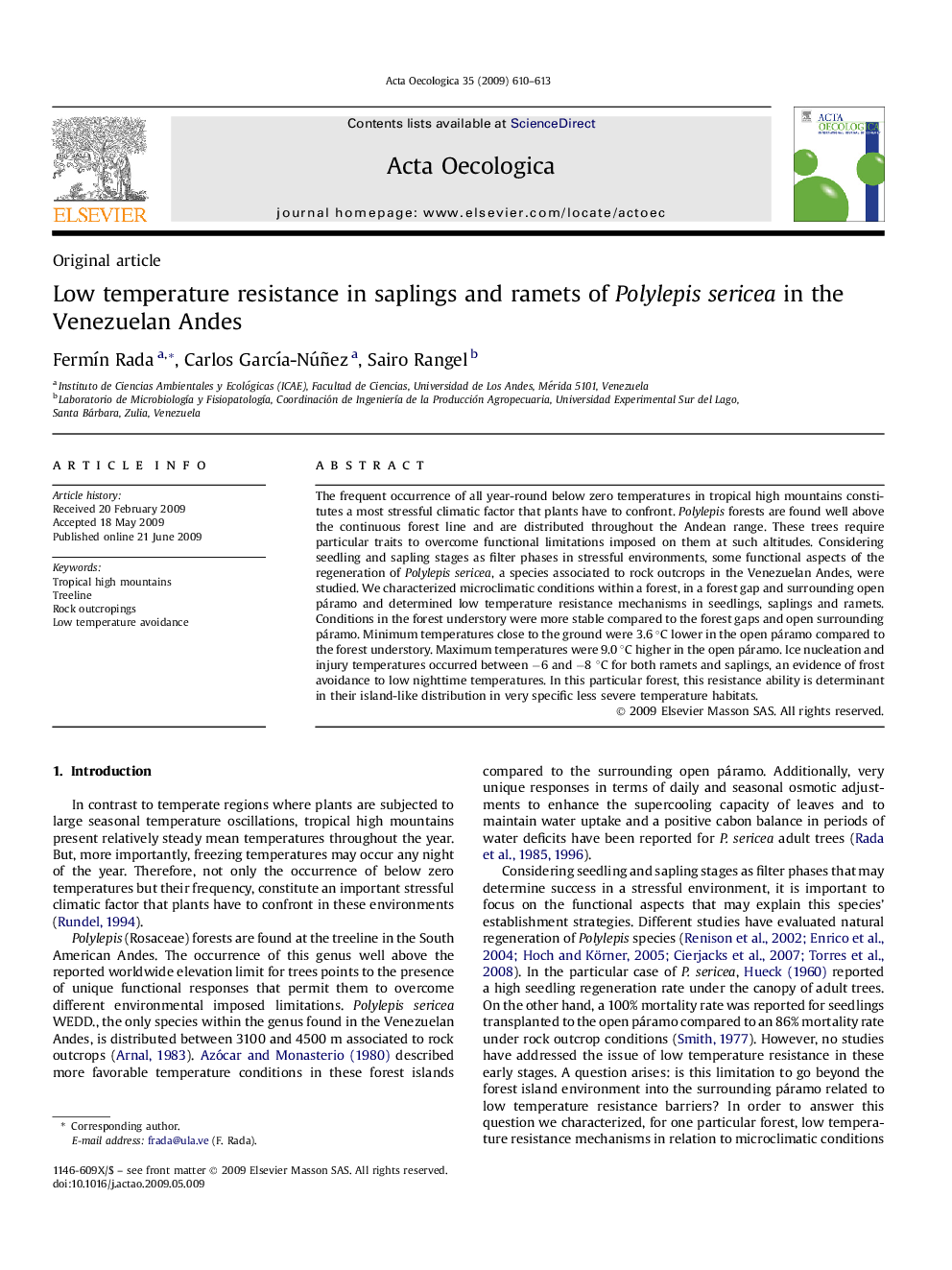| Article ID | Journal | Published Year | Pages | File Type |
|---|---|---|---|---|
| 4381424 | Acta Oecologica | 2009 | 4 Pages |
The frequent occurrence of all year-round below zero temperatures in tropical high mountains constitutes a most stressful climatic factor that plants have to confront. Polylepis forests are found well above the continuous forest line and are distributed throughout the Andean range. These trees require particular traits to overcome functional limitations imposed on them at such altitudes. Considering seedling and sapling stages as filter phases in stressful environments, some functional aspects of the regeneration of Polylepis sericea, a species associated to rock outcrops in the Venezuelan Andes, were studied. We characterized microclimatic conditions within a forest, in a forest gap and surrounding open páramo and determined low temperature resistance mechanisms in seedlings, saplings and ramets. Conditions in the forest understory were more stable compared to the forest gaps and open surrounding páramo. Minimum temperatures close to the ground were 3.6 °C lower in the open páramo compared to the forest understory. Maximum temperatures were 9.0 °C higher in the open páramo. Ice nucleation and injury temperatures occurred between −6 and −8 °C for both ramets and saplings, an evidence of frost avoidance to low nighttime temperatures. In this particular forest, this resistance ability is determinant in their island-like distribution in very specific less severe temperature habitats.
